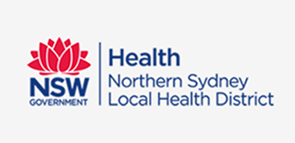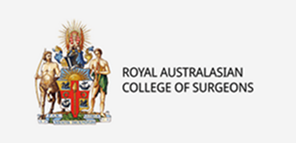- 0401 792 644

- 0401 792 644

A colonoscopy is a procedure that allows Dr Noushi to examine the inner lining of the colon (large intestine). A soft, flexible tube approximately the thickness of an index finger is gently inserted into the anus and advanced through the rectum and colon. This procedure is performed under intravenous sedation (also known as twilight sedation) and is always done in a hospital or day surgery setting.
Colonoscopy is performed for a variety of reasons, including:
Colonoscopy is generally well tolerated. Patients may feel pressure, bloating, gassiness, or cramping at times. Anaesthesia is administered through a vein to help you relax and minimise discomfort.
You will be positioned on your side or back while the colonoscope is carefully advanced through the large intestine. Dr Noushi will examine the colon lining both during insertion and withdrawal of the instrument. The procedure usually takes between 20 to 60 minutes.
Occasionally, the entire colon may not be visualised, and further investigations may be necessary.
You must arrange for someone to drive you home following the procedure. You may receive a pre-assessment phone call from a nurse or staff member prior to your procedure to confirm your medical history and fitness for sedation. Sedation will impair your judgment and reflexes for the rest of the day. Do not drive or operate machinery until the following day.
If left untreated, hernias can enlarge or lead to serious complications:
If an abnormal area is detected, a biopsy may be taken and sent to a pathology lab for analysis. Biopsies do not necessarily indicate cancer.
Polyps, which may be benign or cancerous, are usually removed during the procedure. Removal is typically done with a wire loop (snare) or cautery (burning). If numerous or large polyps are present, multiple procedures may be required.
Areas of bleeding can be treated by injecting medication or using heat to cauterise bleeding vessels. Removing polyps during colonoscopy is a key method for preventing colorectal cancer.
A clean bowel is critical for a successful colonoscopy. Inadequate preparation may require rescheduling the procedure. If you have kidney disease, heart failure, or other chronic medical conditions, please notify Dr Noushi’s rooms as your bowel preparation may need to be adjusted.
Purchase 3 sachets of Picoprep from your pharmacy. If unavailable, Picolax may be used instead.
Begin a low-fibre diet 3 days before the test (see below) for 2 days.
On the day before your procedure, consume only approved clear fluids (see list below).
1:00 PM – Mix and drink 1 sachet of Picoprep in a glass of water. Follow with 3–4 glasses of water or clear fruit juice.
4:00 PM – Take the second sachet, followed by more fluids.
7:00 PM – Take the final sachet and continue drinking fluids.
Remain near a toilet. Laxatives typically cause multiple loose bowel movements within 2–3 hours of the first dose. If you feel nauseated, slow down the rate of intake. Complete the entire preparation.
Dr Noushi will explain your results after the procedure or during a follow-up visit. If biopsies or polyps are taken, the results may take several days and will be discussed at that time. You may experience mild cramping or bloating due to air used during the examination, which usually resolves quickly.
You can resume eating and normal activities after leaving the hospital, but avoid driving or operating machinery until the next day.
If sedation was used, you will be monitored for 1–2 hours until its effects wear off. You must have someone to accompany and drive you home.
If polyps were removed, you may require follow-up colonoscopies. Dr Noushi will advise on the appropriate surveillance interval.
Colonoscopy is generally very safe when performed by an experienced specialist. However, there is a small risk that flat or small polyps may be missed despite a thorough examination. Complications are rare but may include:
Contact Dr Noushi immediately if you experience severe abdominal pain, fever or chills and rectal bleeding exceeding half a cup (can occur up to several days later)
Breakfast cereals:
Cornflakes, Rice Bubbles, strained oatmeal, Semolina
Bread & Biscuits:
White bread, plain dry biscuits, white muffins, crumpets
Rice & Pasta:
White rice, plain noodles, plain pasta
Fruit & Juices:
Clear or strained fruit juices
Vegetables:
Well-cooked peeled pumpkin or potatoes, strained vegetable juice
Milk & Dairy:
Skim milk, plain custard, plain low-fat yoghurt, cottage cheese, plain cheese, plain ice cream
Meats:
Chicken, fish, eggs, pork, veal, ham, bacon
Desserts & Sweets:
Jelly, plain sweet biscuits, plain chocolate, boiled lollies
Soups:
Clear soups with approved ingredients
Miscellaneous:
Salt, sugar, honey, golden syrup, soy, vinegar
Whole grain cereals, cereals with dried fruits or nuts, wheat germ
Wholemeal or multigrain bread, high-fibre biscuits
Brown rice, wholemeal pasta
All fruit, fruit juices with pulp
All others
Cheese or yoghurt with fruit or nuts
Red meat, legumes (lentils, chickpeas, baked beans), nuts, peanut butter, seasoned meats
Desserts with wholemeal flour, nuts or coconut
All other soups
Jams and marmalades with skins, seeds, or peel; coconut



